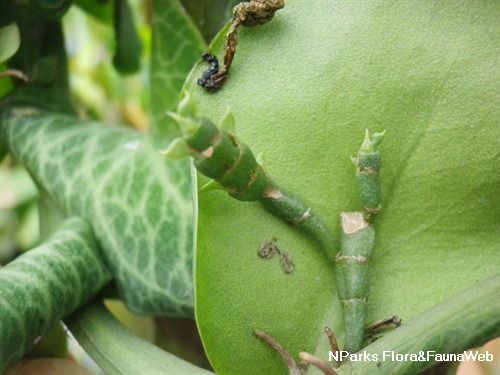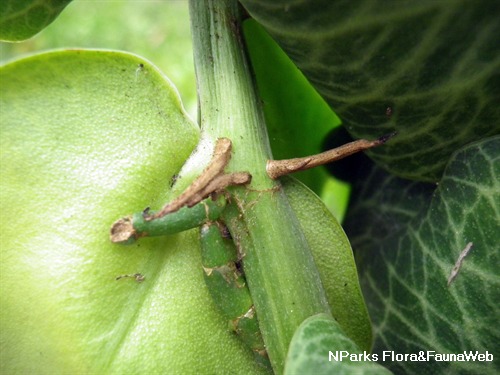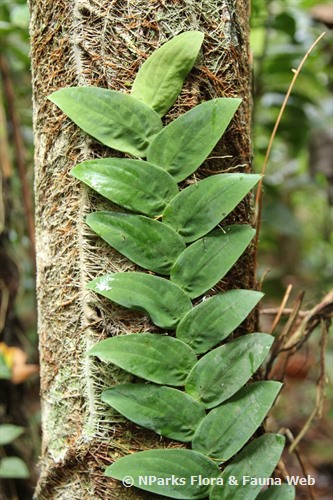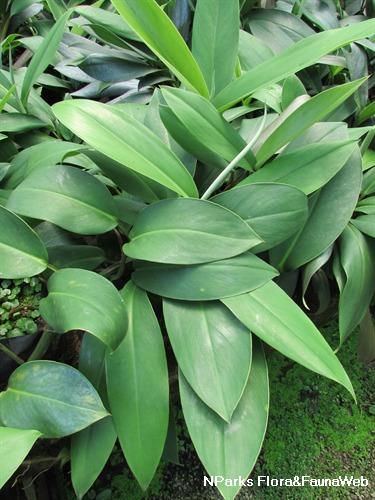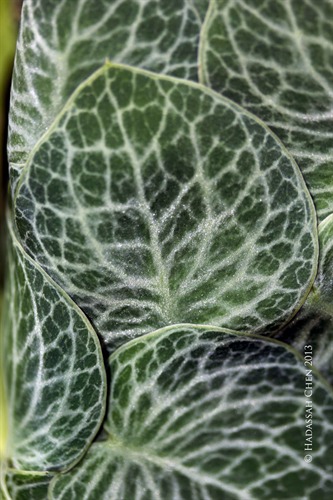
Name
Classifications and Characteristics
| Plant Growth Form | Climber |
|---|
Biogeography
| Native Distribution | The exact origin of this species is not known, but it was first discovered growing in Lae Botanic Gardens in Papua New Guinea. |
|---|---|
| Native Habitat | Terrestrial |
| Preferred Climate Zone | Tropical |
Description and Ethnobotany
| Growth Form | Slender to robust vine to 3m in length |
|---|---|
| Foliage | Adult plants with densely leafy sterile stems; leaves distichous, shingling, broadly obvate with a cordate base, green with silver grey reticulation, appressed on growing susbtrate. 'Foragaing' shoots flagellate, thin, with long internodes 3-4cm in length. |
| Flowers | Inflorescences often completely hidden behind the appressed leaves, on short, abbreviated stems arising from the leaf axils. Spathe yellow. |
| Cultivation | In cultivation, the pre-adult plants are often mistaken for Monstera dubia, another species in cultivation with shingling, silver-streaked leaves. These two are easily differentiated from the orientation of the leaves - in Rhaphidophora cryptantha the leaves are ascending direction, whereas in Monstera dubia, the leaves are descending. |
| Etymology | The specific epithet refers to the inflorescences, as these are found behind the appressed leaves and are either completely hidden or with only the tip of the spathe showing. |
Landscaping Features
| Desirable Plant Features | Ornamental Foliage, Ornamental Form |
|---|---|
| Landscape Uses | Parks & Gardens, Small Gardens, Interiorscape/ Indoor Plant |
| Thematic Landscaping | Silver Garden |
| Usage Hazard - Cons | Irritant - Sap |
Plant Care and Propagation
| Light Preference | Semi-Shade |
|---|---|
| Water Preference | Moderate Water, Occasional Misting |
| Rootzone Tolerance | Well-Drained Soils, Fertile Loamy Soils |
| Planting Remarks | This species can be allowed to creep up tree trunks or an alternative form of support. It can also be trained to grow on walls, but the walls should be in semi-shaded areas where the surface temperatures will be much cooler. It is also important to note that the clasping roots can damage painted surfaces, so it is not recommended for walls that have been painted over. |
| Propagation Method | Stem Cutting |
Foliar
| Foliage Retention | Evergreen |
|---|---|
| Mature Foliage Colour(s) | Green, Silver / Grey |
| Mature Foliage Texture(s) | Smooth |
Image Repository
Others
| Master ID | 31903 |
|---|---|
| Species ID | 6305 |
| Flora Disclaimer | The information in this website has been compiled from reliable sources, such as reference works on medicinal plants. It is not a substitute for medical advice or treatment and NParks does not purport to provide any medical advice. Readers should always consult his/her physician before using or consuming a plant for medicinal purposes. |

